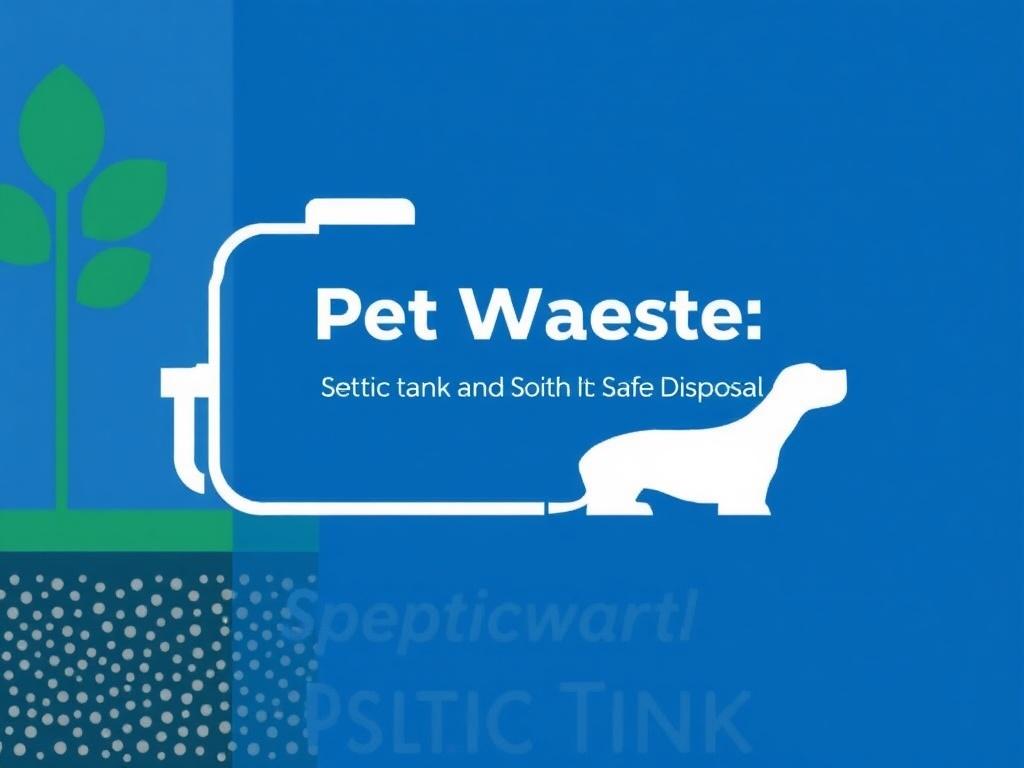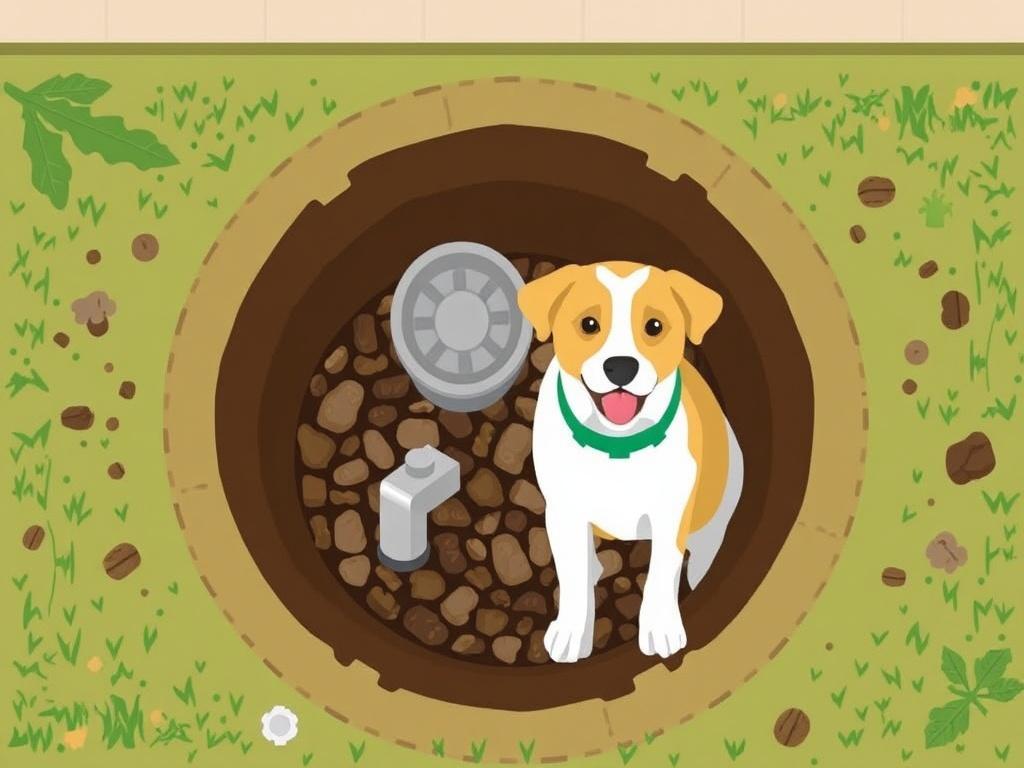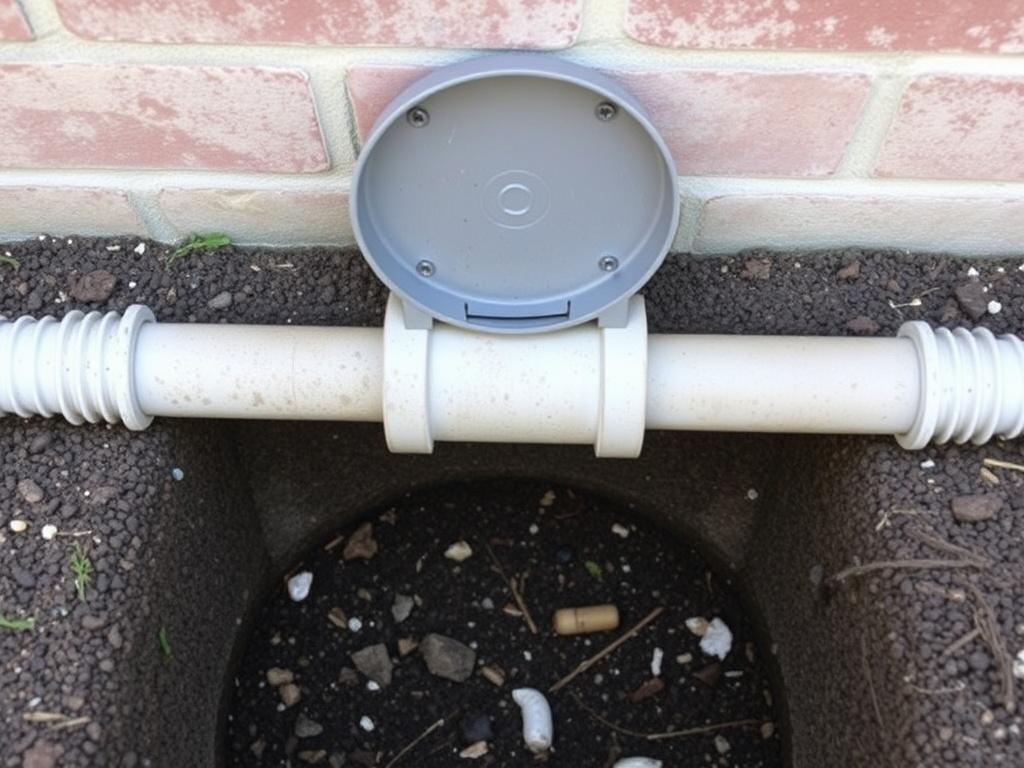When it comes to managing waste in our homes, the topic of septic tank maintenance and pet waste disposal is often overlooked. Yet, these two elements play a crucial role in preserving both our household plumbing systems and the environment. Understanding how to safely dispose of pet waste and maintain your septic tank can save you a lot of trouble and money in the long run, while also protecting local water sources from contamination. In this article, we will delve into the best practices for septic tank and pet waste safe disposal, exploring how they interconnect and what every homeowner should know to keep their property—and community—safe and healthy.
- Understanding the Septic Tank System
- The Impact of Pet Waste on Septic Tanks
- Common Methods of Pet Waste Disposal
- Safe Disposal Practices for Pet Waste
- 1. Use Biodegradable Dog Waste Bags
- 2. Designate a Pet Waste Disposal Spot
- 3. Avoid Flushing the Waste
- 4. Proper Kitty Litter Disposal
- How to Maintain Your Septic Tank with Pets in the Household
- Pet Owner’s Septic Tank Maintenance Checklist
- Environmental Impact of Improper Pet Waste Disposal
- Innovative Solutions in Pet Waste Disposal and Septic Management
- Integrating Pet Waste Disposal Into Your Household Routine
- Conclusion
Understanding the Septic Tank System
Before diving into the specifics of pet waste disposal, it’s essential to grasp how a septic tank works and why proper usage matters. A septic tank is an underground wastewater treatment system commonly used in rural and suburban homes not connected to municipal sewage lines. The system collects household wastewater, separates solids from liquids, and allows bacteria to break down harmful substances.
Typically, a septic tank consists of a buried watertight container made of concrete, fiberglass, or plastic. Wastewater flows from your home into the tank, where solids settle to the bottom in the form of sludge, and lighter materials, like oils and grease, float to the top as scum. The partially treated liquid in the middle layer then flows into the drain field, where it seeps into the soil, naturally filtering out impurities.
Proper maintenance of septic tanks includes:
- Regular pumping to remove sludge buildup
- Avoiding disposal of harmful chemicals and non-biodegradable items
- Using water efficiently to reduce system overload
Failure to care for your septic tank properly can result in foul odors, plumbing backups, and even groundwater contamination. This is why it’s vital to consider how every type of waste, including pet waste, can impact this delicate system.
The Impact of Pet Waste on Septic Tanks

Now, you may ask, “Can pet waste go into a septic tank?” The answer isn’t as straightforward as it seems. Pet waste contains bacteria, parasites, and nutrients that can disrupt the natural bacterial balance inside the septic tank, potentially leading to inefficiencies and even failures in the system.
Unlike human waste, which septic tanks are designed to process, pet waste might carry pathogens that are harmful to other animals and humans. When pet waste is flushed or discarded in septic systems, these pathogens can survive and spread into the drain field or nearby waters, posing health risks.
Additionally, when disposed of improperly, pet waste can overload the tank with extra solids, increasing the frequency of septic pumping. Some experts recommend disposing of pet waste in the trash rather than flushing it, particularly for homes with smaller or older septic systems that may not handle excess solids efficiently.
Common Methods of Pet Waste Disposal
Let’s explore the typical ways people manage pet waste and evaluate their effect on septic tanks and the environment:
- Flushing Pet Waste Down the Toilet: Although convenient, flushing pet waste can introduce harmful bacteria and parasites directly into your septic tank, which may disrupt the bacterial action needed for treating household wastewater. Plus, pet waste may contain non-digestible materials such as kitty litter that can clog pipes.
- Bagging and Trash Disposal: This is one of the safest methods for septic systems. Pet waste is collected in biodegradable or plastic bags and disposed of with regular household trash. Although this method prevents septic contamination, it raises concerns about landfill impact.
- Composting Pet Waste: While composting is excellent for garden waste, pet waste requires special treatment due to pathogens. Only composters designed for pet waste or professional pet waste compost services should be used; otherwise, the compost can be hazardous.
- Pet Waste Digesters: These are in-ground septic tanks specifically designed for pet waste. They allow decomposition on-site and are a great solution for large volumes of pet waste but need proper installation and maintenance.
Safe Disposal Practices for Pet Waste
To protect your septic tank and the environment, here are best practices for safe pet waste disposal:
1. Use Biodegradable Dog Waste Bags
Biodegradable bags are preferred since they break down more quickly than plastic bags, reducing landfill impact. However, ensure they’re truly compostable and dispose of them in the trash rather than flushing.
2. Designate a Pet Waste Disposal Spot
If you have a yard, consider setting up a pet waste digester system or regularly collect waste and bag it for trash pickup. This reduces the chance of runoff contaminating local soil or water.
3. Avoid Flushing the Waste
Refrain from flushing pet waste or kitty litter down the toilet; this can lead to septic tank imbalances and plumbing issues. Instead, bag the waste securely for trash disposal.
4. Proper Kitty Litter Disposal
Some kitty litters are flushable, but most are not septic-safe. Use biodegradable litter in composters specifically designed for pet waste or dispose of it in the trash.
How to Maintain Your Septic Tank with Pets in the Household
When pet waste disposal aligns with septic tank maintenance, the entire household benefits. Here are some tips to keep your septic system healthy:
- Regular Pumping: Septic tanks should be pumped every 3-5 years, or more frequently if you have pets adding extra solids.
- Limit Household Chemicals: Harsh cleaning agents can kill beneficial bacteria in your septic tank, reducing its effectiveness.
- Water Conservation: Excess water can saturate the drain field and cause backups. Fix leaks and use water-efficient fixtures.
- Professional Inspection: Have your septic system inspected annually by a professional, especially if you notice slow drains or odors.
Pet Owner’s Septic Tank Maintenance Checklist
| Action | Frequency | Purpose |
|---|---|---|
| Pumping septic tank | Every 3-5 years or as needed | Remove accumulated solids to prevent clogs and failures |
| Professional septic inspection | Annually | Check system health and detect issues early |
| Proper pet waste disposal (bag & trash) | After every pet waste event | Prevent harmful bacteria and extra solids in the septic tank |
| Fix leaks and conserve water | Ongoing | Avoid system overload and saturation of drain field |
Environmental Impact of Improper Pet Waste Disposal

Improper disposal of pet waste doesn’t just affect your septic tank—it also harms the environment. Pet waste is a source of nitrogen, phosphorus, and harmful bacteria that can pollute water bodies when it runs off into storm drains or seeps from overloaded septic systems.
Contaminated water can result in algal blooms, which deplete oxygen in lakes and rivers, harming fish and other aquatic life. Pathogens from pet waste can also pose health risks to humans who come into contact with contaminated water during recreational activities or consume polluted seafood.
Communities with many pets that improperly dispose of waste often experience increased water treatment costs and environmental degradation. Practices like bagging pet waste and disposing of it safely help reduce these problems.
Innovative Solutions in Pet Waste Disposal and Septic Management

The rise in pet ownership has inspired new technological solutions and products designed to promote safe disposal and reduce septic system strain:
- Flushable Pet Waste Bags: Designed to break down in water, these bags are touted as septic-safe but should be used cautiously and sparingly.
- Pet Waste Composting Systems: Specially engineered composters heat and treat pet waste, rendering it safe for use as fertilizer when properly managed.
- Septic Tank Additives: Microbial additives can help break down organic waste more efficiently, but use products recommended by septic professionals only.
- Smart Monitoring Systems: Sensors can now alert homeowners to septic tank levels and potential problems, helping ensure timely maintenance and preventing failures due to pet waste or other factors.
Integrating Pet Waste Disposal Into Your Household Routine
Creating a pet waste disposal routine that complements your septic tank maintenance is crucial for success. Here’s a practical list for pet owners:
- Always carry biodegradable bags on walks.
- Dispose of pet waste bags in the trash can or designated bins.
- Do not flush any pet waste or litter to your septic system.
- Install a pet waste digester if you have a large yard or many pets.
- Observe your septic system for signs of issues, such as slow drains or odors.
- Schedule regular septic tank pumping and inspections.
By integrating these habits into daily life, you contribute to a cleaner and safer home environment for your family, pets, and neighbors.
Conclusion
Safe disposal of pet waste is more than a matter of convenience—it’s a critical factor in protecting your septic tank, household plumbing, and the broader environment. Although it may seem easier to flush or ignore pet waste disposal guidelines, doing so can lead to costly septic repairs, environmental contamination, and health risks. By understanding how septic tanks process waste and acknowledging the unique challenges pet waste poses, homeowners can adopt responsible disposal methods such as bagging pet waste for trash, using specialized digesters, and maintaining septic systems through regular inspections and pumping. Combining consistent pet waste disposal routines with vigilant septic maintenance safeguards your property and nurtures the environment. After all, a little care today leads to a healthier, cleaner tomorrow for everyone—pets included.
Помогла вам статья?






